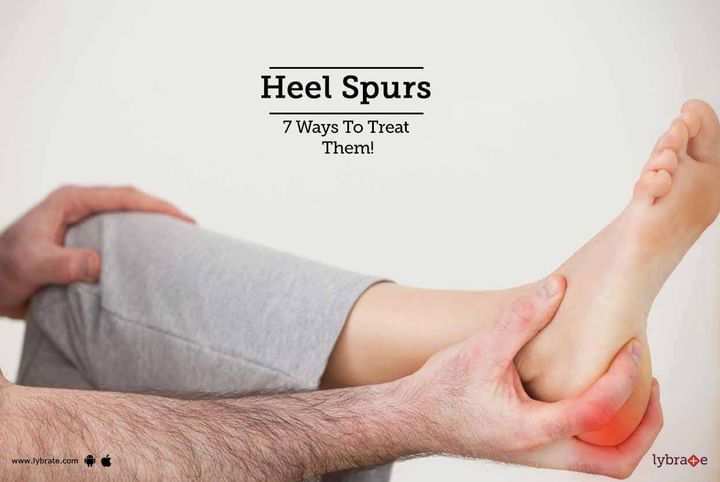Heel Spurs - 7 Ways To Treat Them!
For some people, the simple act of walking can be very uncomfortable. This is because they may be suffering from a heel spur. Heel spurs are calcium deposits that cause a bony protrusion on the underside of the heel bone. Heel spurs themselves may be painless but walking or jogging can make the person like a knife or pin is sticking into his or her sole. This may also be felt while standing up after being seated for a long time. Heel spurs do not heal on resting and usually need medical attention. Some ways of treating a heel spur are-
-
Stretching Exercises: Heel spur exercises help strengthen the tissue in the heel and increases the fascia and Achilles tendon flexibility. This, in turn, helps reduce the pain and prevents a recurrence of the condition. Try standing with both feet apart and flex your knees while squatting. Keep your heels on the ground for as long as possible.
-
Wearing The Right Shoes: Wearing shoes that do not fit well is one of the leading causes for heel spurs. When buying shoes look for a firm heel counter, a ¾-1 1/2 inch heel, a long vamp, semi-rigid or rigid shank and a toe box that is wide enough to accommodate your toes without pinching them.
-
Taping or Strapping to Rest Stressed Muscles and Tendons: Taping or strapping your foot tightly can help protect the fascia and allow the spur to heal. It also rests the muscles and tendons and distributes the pressure being put on them.
-
Shoe Inserts or Orthotic Devices: Using an insole can help cushion the heel and reduce the pain of a heel spur. It also reduces the impact felt while walking or standing.
-
Physical Therapy: Physiotherapy for heel spurs aims at strengthening the foot and calf muscles. Your doctor will try and gradually increase the possible range of motion and restore muscle control in the foot arch. You will also be taught how to improve your running and landing techniques.
-
Medication: Over the counter medication like ibuprofen may help temporarily ease the pain caused by heel spurs. In some cases, corticosteroid injections may also be prescribed to reduce the inflammation and pain.
- Surgery: If there is no improvement in a heel spur within 9 to 12 months, surgery may be considered to remove the spur or release the plantar fascia. However, this is rare and most heel spurs do not need surgery.
In case you have a concern or query you can always consult an expert & get answers to your questions!



+1.svg)
